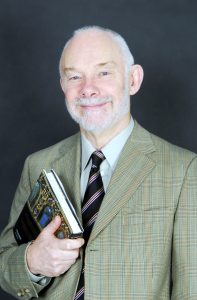 One has only to scan the titles of the more than 200 papers that Professor Thompson – Mike T as he is affectionately known to his friends in the IAG – has published to get a sense of the breadth and depth of his contributions to geochemistry and analytical and metrological science more widely over nearly five decades. A 1977 paper with John Webb sets out the analytical requirements for exploration geochemistry. Although the analytical techniques employed have changed enormously – in those days atomic absorption spectrometry and colorimetry were widely used – the principles of fitness for purpose, cost effectiveness, having an effective sampling strategy, and the vital need for geochemists, analytical chemists, geologists and geophysicists to work closely together remain as true today.
One has only to scan the titles of the more than 200 papers that Professor Thompson – Mike T as he is affectionately known to his friends in the IAG – has published to get a sense of the breadth and depth of his contributions to geochemistry and analytical and metrological science more widely over nearly five decades. A 1977 paper with John Webb sets out the analytical requirements for exploration geochemistry. Although the analytical techniques employed have changed enormously – in those days atomic absorption spectrometry and colorimetry were widely used – the principles of fitness for purpose, cost effectiveness, having an effective sampling strategy, and the vital need for geochemists, analytical chemists, geologists and geophysicists to work closely together remain as true today.
Towards the end of the paper, predicting future trends, he foresaw that “plasma-excitation spectrophotometry and quadripole [sic] mass spectrometry” would become increasingly important. Mike subsequently published some of the first papers on the combination of techniques such as laser ablation and hydride generation with ICP spectrometry.
An early major achievement was organizing his roughly twenty analytical staff in the famous Applied Geochemistry Research Group at Imperial College, London to produce the million data points that became the Wolfson Geochemical Atlas of England and Wales – a landmark publication in 1978. Robust quality control procedures ensured coherence of the data across 50,000 samples.
Mike has put his great skill in interpreting large sets of analytical data to good use throughout his career, particularly in the field of proficiency testing (PT). In 2006, with Steve Ellison and Roger Wood, he wrote the international harmonized protocol for the proficiency testing of analytical chemistry laboratories and for many years has worked on two major PT schemes in food (FAPAS) and geochemical (GeoPT) analysis.
Mike was never afraid to challenge analytical orthodoxy or ruffle metrological feathers over such concepts as traceability and uncertainty. In a 1997 paper he argued that a consensus value of a measurand obtained, for example, from a proficiency test, met the criteria of a certified reference material. It took twenty-three years for that concept to be grudgingly incorporated into ISO Guide 17035!
The thought-provoking titles of some of his recent papers, for example, Is your ‘homogeneity test’ really useful? What exactly is uncertainty? Sense and Traceability, Precision in chemical analysis: A critical survey of uses and abuses, and Dark uncertainty, should alert readers that they will find within Mike’s characteristic mix of information and insight.
Mike has worked tirelessly to spread the gospel of analytical rigour combined with metrological realism. For twenty-five years he chaired the Statistical Subcommittee of the Analytical Methods Committee of the Analytical Division of the Royal Society of Chemistry and in 2016 received their Anne Bennett Memorial Award in recognition of his outstanding contribution. He was Editor of the RSC’s AMC Technical Briefs since its inauguration in 1998.
A special symposium was held at Burlington House, London on 15 July 2008 to celebrate Mike’s outstanding contributions in analytical innovation in the fields of geochemical, environmental, exploration and food sciences. To mark this occasion, Mike was presented with his IAG award of Honorary Life Fellow.
